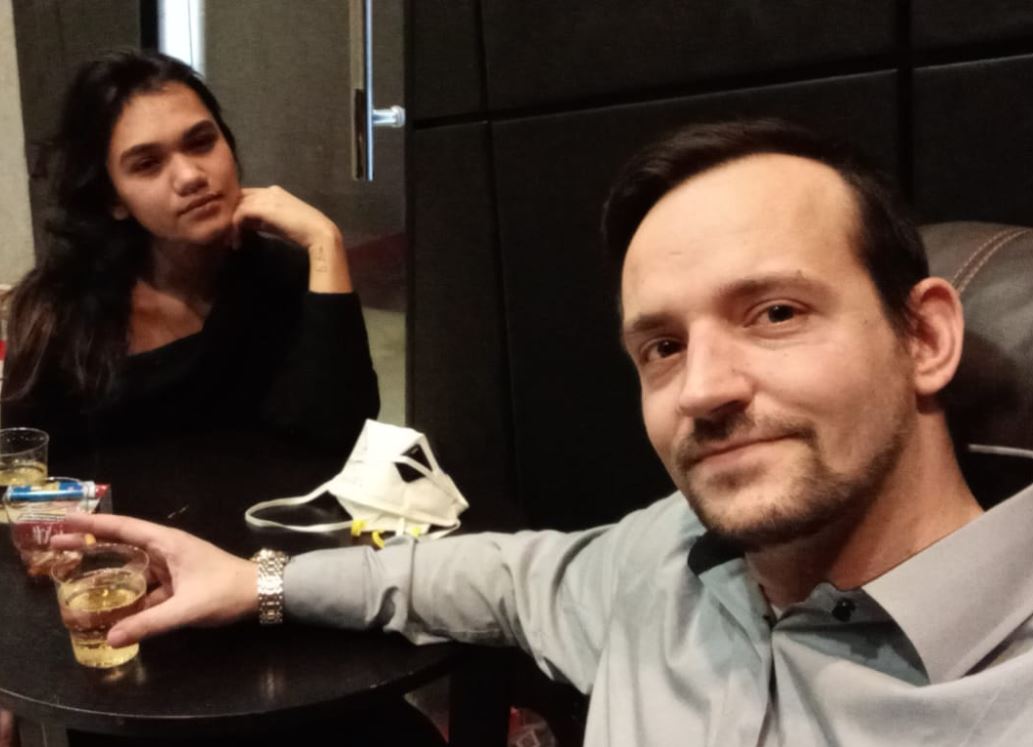One of the most isolated countries in the world opens up to more tourists
When the Turkmenistan government announced new visa regulations in April, experts who are familiar with travel to the Central Asian country were unsure what they should think of. Turkmenistan, together with North Korea and Eritrea, was long one of the most isolated countries in the world. This isolation goes back to the 1990s when the country is ...

One of the most isolated countries in the world opens up to more tourists
When the government of Turkmenistan in April new Visa regulations, they were experts who travel to the central Knowing the country, unsure what to think of it. Turkmenistan, together with North Korea and Eritrea, was long one of the most isolated countries in the world. This isolation goes back to the 1990s when the country turned away from the decay of the Soviet empire and established an autocratic, closed regime.
challenges when traveling to Turkmenistan
For certain travelers, especially those who are interested in conflict areas and geopolitical curiosities, Turkmenistan's seclusion has a fascinating charm. However, a big obstacle remains: entry. In order to obtain a tourist visa, a lengthy process is required that includes the procurement of an invitation letter (LOI) from the Foreign Ministry after booking an appointment with an approved tour operator. The examination of whether someone can enter can sometimes take months.
The news that the regime intends to make it easier to enter tourists was surprising, says Dylan Lupine, whose lupine Travel Small group trips to Turkmenistan. "We are still in the dark, and this also applies to our local partners in Turkmenistan, since there has been no further information since then. The new visa regulations are not yet in force and there is no news when it will happen," says Lupine. Once the new process starts, visitors should be able to make an application online with the promise that this will work much faster and with fewer rejections. The Loi request could Probably Still need a "sponsor" in Turkmenistan, which in most cases means that you have to register for a guided tour. "As soon as it comes into force, I think that the number of visitors will rise sharply," adds Lupine.
The main attractions of Turkmenistan
Over the years, Turkmenistan was the main attraction, even before the independence from the USSR, the Darvaza-gaskrater . It is located in the Karakum desert, about four hours of car from the capital Ashgabat, and is a man-made phenomenon that was created during the Soviet period when a natural gas exploration platform fell into a hole. Visitors travel through the desert in 4 × 4 convoys, spend the night in yurt camps and go to the edge of the "gate to hell" after dark to feel the heat and to hear the hissing of the flames that rise from the depth
However, the Darvaza crater is slowly consuming its natural gas. The flames have decreased noticeably in recent years, and it is predicted that the crater could finally go out in the coming years. But that does not mean that there are no other reasons for a visit. Ancient caravan cities on the Silk Road with its historical mosques and minarets offer a dramatic contrast to Ashgabat, which is decorated with exaggerated modern architecture and grandiose monuments that include everything from post -communist leaders and medieval poets to golden horses, the national dog and a huge bull that balances the world on its head.
the culture and people of Turkmenistan
The Turkmen are warm and inviting because they meet very few foreign visitors. Almost 80 % of the country are desert, and the uniqueness of exploring a place that only a few have visited in modern times contributes to the fascination. The Norwegian writer and anthropologist Erika Fatland, who " Sovietistan "and other works on Central Asia Soviet Union has written, Turkmenistan describes as a country that differs greatly from all the countries she has visited.
"The bright white marble capital Aschgabat with its empty streets is one of the strangest capitals I have ever visited," says Fatland. With golden statues and white marble, ashgabat is both an architectural miracle an instagram icon. Many buildings are designed in terms of their government functions, such as a ministry for oil and gas that looks like a huge lighter. Other structures have been created to set up Guinness World Records, including the largest indoor greater wheel and a Kolosseller Horsekopf , which hovers over the national stadium.
The culinary experience and the sights
In the inner Russian bazaar of the city, retailers offer samples from Kaviar, which are obtained from the Turkmen part of the Caspian Sea, as this author discovered during a recent visit. The mixture of Persian and Central Asian influences makes the culinary offer surprisingly diverse. The nightlife is rather limited, but you can enjoy a cold beer in Clever’s Irish Pub or the Florida British Pub. In the past, Turkmenistan was a strategic hub along the Silk Road between Asia and Europe, and the country has several Unesco-World Heritage States Aschgabat and the extensive ruins of Merv in the east of Turkmenistan. The richly decorated grand mosques, graves and the high minaret of Kunya-Urengech in the far north are particularly impressive.
"I had my most beautiful experiences in Turkmenistan in the country, in the desert, where I met the friendliest and most hospitable people I have ever met," says Fatland. "The only disadvantage was the fermented camel milk, the chal, the unofficial national drink that they served me in generous quantities. You can say that it has its own taste."
The sudden change in travel policy
Ironically, Turkmenistan was easier to visit during the Soviet period when intourist made the trip within the USSR easier. Founded in 1929 by the autocratic guide Joseph Stalin, the state travel agency had the task of generating foreign exchange through tourism and ensuring that visitors (almost all on closely monitored tours) only saw the best sides of the Soviet Union. With offices in London, New York and other foreign cities, Intourist attracted travelers with striking posters and newspaper advertisements. One of the tours she offered in the 1930s was a 16-day journey through the "ancient cities of Turkestan", which included a stop in the "flowering Aschkhabad".Tourism initially grew slowly. But with the relaxation of the Cold War in the 1980s, the USSR attracted around four million tourists a year. The decay of the Soviet Union after the fall of the Berlin Wall offered the opportunity to further increase the number of visitors, but Turkmenistan did not take this opportunity. When Moscow offered his 14 socialist republics in 1991, Turkmenistan's leader Saparmurat Niyazov initially hesitated.
"Everything is due to Niyazov," says Lupine. "Before the fall of the Soviet Union, his actions showed a negative attitude towards Perestroika and Glasnost. After independence, he introduced his own methods, which were strongly influenced by the Soviet model."
The old Soviet model limited the total number of tourists and held them on the short leash by offering tourist nic programs that only showed the aspects of Turkmenistan that Niyazov wanted to present to the outside world. Meanwhile, the huge gas deposits of Turkmenistan allowed the country to stay self-sufficient and neutral in the post-Soviet age, which excluded the need for international influences. Even after the death of Niyazov in 2006, the new leadership kept the strict control over foreign visitor numbers.
an outlook on the future
However,there is indications that something may change soon. According to the latest report by the Bertelsmann Transformation Index (BTI), Turkmenistan has been struggling with economic problems for almost a decade. In the hope of attracting more foreign investments and increasing employment, the government is aiming for economic cooperation with other nations, such as the latest Gas cooperation agreement with Turkey and Iran.
Some observers believe that the efforts to simplify the visa process and increase tourism are part of this overarching strategy to increase the foreign exchange reserves. In Uzbekistan and Kazakhstan, two neighboring countries Turkmenistan, tourism is already booming. "When Uzbekistan simplified his visa procedures after the death of President Islam Karimov, the number of tourism rose and maybe hope for similar effects in Turkmenistan," says Fatland. "The other 'Stans' all have opened the entry with visa -freeness for many nationalities, maybe Turkmenistan has felt the need to get a little more relaxed."

 Suche
Suche
